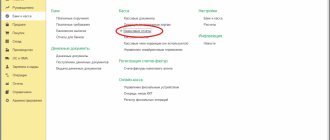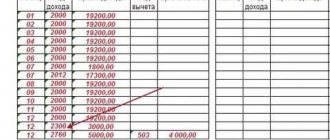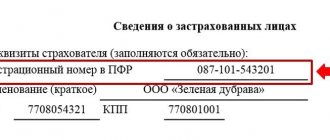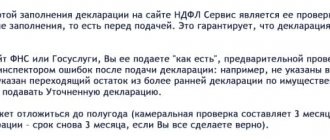Who takes 2-TP (air)
Who passes 2-TP (air) - legal entities and individual entrepreneurs who operate stationary sources of air pollution in the process of economic and (or) other activities.
Information is provided by legal entities or individual entrepreneurs, as a result of whose economic or other activities:
— the volume of permitted emissions of pollutants under the NDC exceeds 10 tons per year;
— the volumes of permitted emissions of pollutants according to the NDC range from 5 to 10 tons per year, inclusive, if the emissions contain air pollutants of hazard class 1 and (or) 2.
The summation must be done according to the current emission document; if there is none, then according to the actual quantity.
Temporarily non-operating organizations, where production of goods and provision of services took place during part of the reporting period, are provided with a federal statistical observation form on a general basis, indicating how long they have not been operating.
Bankrupt organizations that have entered bankruptcy proceedings are not exempt from providing information in the specified form. Only after the arbitration court has issued a ruling on the completion of bankruptcy proceedings and entry into the unified state register of legal entities of its liquidation (clause 3 of Article 149 of the Federal Law of October 26, 2002 N 127-FZ “On Insolvency (Bankruptcy)”) The debtor organization is considered liquidated and is exempt from providing information in the specified form.
Note:
If the average headcount of your enterprise for the reporting period ranged from 25 to 99 people and you do not have an electronic signature, then you need to provide 2-TP (air) on paper with the obligatory sending of the form on electronic media.
If the average headcount for the reporting year was no more than 24 people, then reporting is allowed only on paper.
Where 2-TP (air) is delivered - to the territorial departments of the RPN in the constituent entity of the Russian Federation. If a legal entity or individual entrepreneur has ENVOS in different constituent entities of the Russian Federation, then a report for each ENVOS is submitted to the corresponding territorial department of the RPN. If a legal entity or individual entrepreneur operates several ENVOS in one subject of the Russian Federation, then only one report is submitted, including all ENVOS located in this subject.
But filling out the report tables must be done for each ENVOS separately!
How to calculate the actual emissions of pollutants from sources - see here.
List of respondents reporting on Form 2 - TP (air) for 2022 Amur Region, Khabarovsk Territory. Jewish Autonomous Okrug.
List of respondents 2-tp (air) for 2022 Voronezh, Kursk, Tambov regions.
List of respondents 2-TP (air) for 2022 Lipetsk, Belgorod, Tambov, Kursk, Voronezh regions
List of organizations in the Kirov region carrying out statistical observations in accordance with the established procedure in form No. 2-TP (air) for 2022
List of economic entities of the Udmurt Republic in respect of which federal statistical observation is carried out in form No. 2-TP (air)
List of respondents 2-TP (air) for 2022 Republic of Dagestan, Republic of Ingushetia, Kabardino-Balkarian Republic, Karachay-Cherkess Republic, North Ossetia-Alania, Chechen Republic, Stavropol Territory
List of respondents 2-TP (air) Magadan Territory
You can find the list of objects whose owners are required to submit statistical reporting in form 2-TP (air) (in the Primorsky Territory) HERE
List of respondents Rostov region, Republic of Kalmykia
List of respondents Republic of Dagestan, Republic of Ingushetia, Kabardino-Balkarian Republic, Karachay-Cherkess Republic, North Ossetia-Alania, Chechen Republic, Stavropol Territory
*lists are not exhaustive.
In what cases is form 2-TP (air) not filled out?
The 2-TP report is submitted for each facility that has a negative impact on the atmospheric air (NAI).
NVG is a capital facility, production site, or a combination of them, united by a single technological process, purpose and (or) physically connected with sources of air pollution.
Enterprises and individual entrepreneurs do not fill out a report under Order No. 661 in three cases:
- The entrepreneur did not conduct any economic activity during the year, and there was no environmental pollution.
- The volume of permitted emissions of pollutants under the NDC is less than 5 tons per year.
- The volume of permitted emissions of pollutants according to the NDC ranges from 5 to 10 tons per year, but among them there are no substances of hazard classes 1 and 2. See table 1.1 SanPiN 1.2.3685-21.
In practice, exceptions are rare. Combustion of fuel, manual welding, and the use of synthetic cleaning products produce harmful impurities of classes 1 and 2, even in small quantities.
2-TP (air) - filling
Report 2-TP (air) is filled out based on primary accounting data. It is possible to fill in according to inventory data.
For me, filling in according to inventory data is preferable, since recalculating the g/sec obtained as a result of the measurements. per ton/year can very easily be obtained as a result of calculations for exceeding the established annual amount of emitted substance.
Let's consider filling out the 2-TP Air report using the main tables:
Section 1. Emissions of pollutants into the atmosphere, their purification and disposal
The section is filled out by legal entities and individual entrepreneurs for each ENVOS.
ONV code - filled in on the basis of the registration certificate of ONVOS or certificate of updating. If you have lost your certificates, you can look in the VET UONVOS register.
The OKTMO ONV code is the code of the object of negative impact, and not a legal entity or individual entrepreneur.
OKVED2 ONV code - similar to the above.
OKEI code: ton - 168
Lines 107 and 108 reflect hydrocarbons (without VOCs) and total data on volatile organic compounds (VOCs).
You can check whether your substance is a VOC or a hydrocarbon here.
The numbers in the section are shown in tons with three decimal places.
Section 2. Emission of specific pollutants into the atmosphere
Section 2 shows all pollutants emitted from the ENVOS into the air (atmospheric air), with the exception of those presented in Section 1: sulfur dioxide, carbon monoxide and nitrogen oxides.
If the specified specific substances are in the appendix to the order of the Ministry of Economic Development of the Russian Federation dated November 8, 2018 No. 661, namely in the “List of specific pollutants, data on emissions of which are subject to priority reflection in section 2,” then for each specific substance. We take the codes from the List.
SCROLL
SPECIFIC POLLUTANTS, EMISSION DATA
WHICH SHOULD BE PRIORLY REFLECTED IN SECTION 2
| N p/p | Code | Name of substance | Hazard Class |
| 1 | 0110 diVanadium pentoxide (dust) (Vanadium pentoxide) | 1 | |
| 2 | 0128 | Calcium oxide (Quicklime) | — |
| 3 | 0133 | Cadmium oxide (in terms of cadmium) | 1 |
| 4 | 0134 | Cobalt (Cobalt metal) | 2 |
| 5 | 0143 | Manganese and its compounds (in terms of manganese (IV) oxide) | 2 |
| 6 | 0146 | Copper oxide (Copper oxide) (in terms of copper) | 2 |
| 7 | 0163 | Nickel (Nickel metal) | 2 |
| 8 | 0183 | Mercury (Mercury metal) | 1 |
| 9 | 0184 | Lead and its inorganic compounds (in terms of lead) | 1 |
| 10 | 0197 | Zinc manganese ferrite (in terms of manganese) | 2 |
| 11 | 0203 | Chromium (Chromium hexavalent) (in terms of chromium (VI) oxide) | 1 |
| 12 | 0302 | Nitric acid (per HNO3 molecule) | 2 |
| 13 | 0303 | Ammonia | 4 |
| 14 | 0316 | Hydrochloride (Hydrogen chloride, Hydrochloric acid) (HCl molecule) | 2 |
| 15 | 0317 | Hydrocyanide (Hydrogen cyanide, Hydrocyanic acid) | 2 |
| 16 | 0322 | Sulfuric acid (per H2SO4 molecule) | 2 |
| 17 | 0325 | Arsenic, inorganic compounds (in terms of arsenic) | 1 |
| 18 | 0328 | Carbon (Soot) | 3 |
| 19 | 0329 | Selenium dioxide (in terms of selenium) | 1 |
| 20 | 0333 | Dihydrosulfide (Hydrogen sulfide) | 2 |
| 21 | 0334 | Carbon disulfide | 2 |
| 22 | 0342 | Fluorine gaseous compounds - hydrofluoride, silicon tetrafluoride [Gaseous fluoride compounds (hydrogen fluoride, silicon tetrafluoride)] (in terms of fluorine) | 2 |
| 23 | 0349 | Chlorine | 2 |
| 24 | 0402 | Butane | 4 |
| 25 | 0403 | Hexane | 4 |
| 26 | 0404 | 1,3 - Dimethylcyclobutane (Dimethylcyclobutane, Allene dimer) | — |
| 27 | 0406 | Polyethene (Polyethylene) | — |
| 28 | 0408 | Cyclohexane | 4 |
| 29 | 0409 | Cyclopentane (Pentamethylene) | — |
| 30 | 0410 | Methane | — |
| 31 | 0502 | But-1-ene (Butylene) | 4 |
| 32 | 0524 | Cyclopentadiene | — |
| 33 | 0602 | Benzene | 2 |
| 34 | 0616 | Dimethylbenzene (Xylene) (mixture of isomers o-, m-, p-) | 3 |
| 35 | 0620 | Ethenylbenzene (Vinylbenzene, Styrene) | 2 |
| 36 | 0621 | Methylbenzene (Toluene) | 3 |
| 37 | 0627 | Ethylbenzene | 3 |
| 38 | 0703 | Benz/a/pyrene (3,4-Benzopyrene) | 1 |
| 39 | 0708 | Naphthalene | 4 |
| 40 | 0713 | 1,2,3,4-Tetrahydronaphthalene (Tetralin) | — |
| 41 | 0801 | 3-Chloroprop-1-ene (Allyl chloride) | 2 |
| 42 | 0803 | Benzoyl chloride (Benzoyl chloride) | — |
| 43 | 0808 | Bromoethane (Ethyl Bromide, Ethyl Bromide) | — |
| 44 | 0856 | 1,2-Dichloroethane | 2 |
| 45 | 0906 | Carbon tetrachloride (Carbon tetrachloride) | 2 |
| 46 | 1051 | Propan-2-ol (Isopropyl alcohol) | 3 |
| 47 | 1052 | Methanol (Methyl alcohol) | 3 |
| 48 | 1054 | Propan-1-ol (Propyl alcohol) | 3 |
| 49 | 1069 | Hydroxymethylbenzene (Cresol (mixture of isomers: ortho-, meta-, para-)) | 2 |
| 50 | 1071 | Hydroxybenzene (Phenol) | 2 |
| 51 | 1105 | Ethoxyethane (Diethyl Ether) | 4 |
| 52 | 1210 | Butyl acetate | 4 |
| 53 | 1240 | Ethyl acetate | 4 |
| 54 | 1301 | Prop-2-en-1-al (Acrolein) | 2 |
| 55 | 1325 | Formaldehyde | 2 |
| 56 | 1401 | Propan-2-one (Acetone) | 4 |
| 57 | 1405 | Wood alcohol solvent grade A (acetone ether) (acetone control) | 4 |
| 58 | 1508 | Isobenzofuran-1,3-dione (Phthalic anhydride) (vapour, aerosol) | 2 |
| 59 | 1512 | Prop-2-enoic acid (Acrylic acid) | 3 |
| 60 | 1530 | Hexahydro-2H-azepin-2-one ( -Caprolactam) (vapor, aerosol) | 3 |
| 61 | 1544 | Poly(oxy-1,2-ethanediyloxycarbonyl-1,4-phenylenecarbonyl) (Polyethylene terephthalate) | — |
| 62 | 1551 | Benzene-1,4-dicarboxylic acid (Terephthalic acid) | 1 |
| 63 | 1555 | Ethanoic acid (Acetic acid) | 3 |
| 64 | 1715 | Methanethiol (Methyl mercaptan) | 4 |
| 65 | 1730 | Ethenesulfide (Tiiran, Ethylene sulfide) | 1 |
| 66 | 1819 | Dimethylamine | 2 |
| 67 | 1868 | 1-Amino-3-chlorobenzene (3-Chloroaniline, m-Chloroaniline) | 1 |
| 68 | 1905 | Nitrobenzene | 2 |
| 69 | 2001 | Prop-2-enenitrile (Acrylonitrile) | 2 |
| 70 | 2031 | Diisocyanate methylbenzene | 1 |
| 71 | 2034 | Formamide | 3 |
| 72 | 2117 | 0,0-Diethylchlorothiophosphate | 2 |
| 73 | 2119 | 0,0-Dimethyl-0-(3-methyl-4-nitrophenyl) phosphate (Methylnitrophos) | 3 |
| 74 | 2418 | Pyridine | 2 |
| 75 | 2425 | Furan-2-aldehyde (Furfural) | 3 |
| 76 | 2507 | [4S-(4,4а , 5а , 6,12а )]-4-(Dimethylamino) 1,4,4а,5,5а,6,11,12а-octahydro-3,6,10,12,12а-pentahydroxy -6-methyl-1,11-dioxonaphthacene-2-carboxamide (Tetracycline) | 2 |
| 77 | 2602 | Protein-vitamin concentrate (PVC) (protein) | 2 |
| 78 | 2704 | Gasoline (petroleum, low sulfur) (carbon equivalent) | 4 |
| 79 | 2731 | Epoxy powder paint (PEP-971) | — |
| 80 | 2735 | Mineral petroleum oil (spindle, machine, cylinder, etc.) | — |
| 81 | 2738 | Butyl formate solvent (BEF) (according to the total acetates) | 3 |
| 82 | 2748 | Turpentine (in terms of carbon) | 4 |
| 83 | 2753 | Rosin activated flux (FKT) (rosin control) | 4 |
| 84 | 2755 | Flotation reagent FLOKR-3 (for chlorine) | 2 |
| 85 | 2756 | Phenolic fraction of light resin from high-speed pyrolysis of brown coals | 2 |
| 86 | 2903 | Shale ash | 3 |
| 87 | 2904 | Fuel oil ash from thermal power plants (in terms of vanadium) | 2 |
| 88 | 2906 | Meliorant (mixture: calcium carbonate, chloride, sulfate - 79%; silicon dioxide - 10 - 13%; magnesium oxide - 3.5%; iron oxide - 1.6%, etc.) (Ameliorant dust) | 4 |
| 89 | 2907 | Inorganic dust containing silicon dioxide above 70% (Dinas et al.) | 3 |
| 90 | 2908 | Inorganic dust: 70 - 20% silicon dioxide (fireclay, cement, cement production dust - clay, shale, blast furnace slag, sand, clinker, ash, silica, etc.) | 3 |
| 91 | 2910 | Dry urea glue dust | — |
| 92 | 2911 | Feed dust (in terms of protein) | — |
| 93 | 2912 | Bone meal dust (calculated as protein) | — |
| 94 | 2914 | Dust (inorganic) of gypsum binder from phosphogypsum with cement | — |
| 95 | 2915 | Fiberglass dust | — |
| 96 | 2916 | Fiberglass dust | — |
| 97 | 2917 | Cotton dust | 3 |
| 98 | 2926 | Coal ash from thermal power plants (with calcium oxide content 35 - 40%, dispersion up to 3 microns and below at least 97%) | 2 |
If the emitted pollutants are not on the List, then the total for these substances is indicated as code 8888.
For example:
Figures are shown in tons per year with three decimal places.
Section 3. Sources of air pollution
This section of legal entities must be filled out in full; an exception has been made for individual entrepreneurs - only column 1 is filled in. Filling out is also done for each ENVOS.
Another nuance:
Section 3 is completed by all enterprises, regardless of whether they have established standards, whether they are in the development stage, or whether work on them has not been carried out at all.
Enterprises that have not carried out work on regulating emissions of pollutants into the atmosphere or have not completed this work in full and have not received the appropriate emission permit from the regulatory authorities, fill out line 301 only in columns 1, 2 and 4, and put a dash in column 3 .
Enterprises that have developed, in accordance with the established procedure, standards for maximum permissible emissions (MPE) and (or) temporarily agreed upon emissions (TAE) and received permits to release these substances, fill out lines 301 - 303.
Individual entrepreneurs are guided by the same principles, but fill out only column 1.
column 1:
the total number of stationary emission sources (including fugitive ones) actually used during the reporting period, from those available at the enterprises, is indicated.
column 2:
data on organized sources of pollutant emissions is highlighted (starting in the MPE volume at 0)
column 3:
the volume of permitted emissions of pollutants into the atmospheric air from stationary sources is indicated.
column 4:
indicates the total amount of pollutants released into the atmosphere from all emission sources.
Enterprises that have an emission permit, using the above columns in line 302, highlight data on emission sources for which the MPE standard is established for each substance entering the atmosphere, and in line 303 - the VSV standard.
If several pollutants are emitted from a source and for some of them the MPE standards are established, and for the rest (or at least one substance) - the maximum permissible limit, then the data for such a source are reflected in line 303.
Data in columns 1 and 2 are shown in whole numbers, and in columns 3, 4 - in tons per year with three decimal places.
Section 4. Implementation of measures to reduce emissions of pollutants into the atmosphere
The section is filled out only by legal entities for each ENVOS separately.
In columns 5 and 6, each number must be preceded by a “-“ sign.
Control and instrumental measurements, operational and adjustment tests, development of draft MPE standards and other activities, the implementation of which is not directly related to the reduction of emissions of air pollutants from stationary sources, are not taken into account.
Section 5. Emissions of pollutants into the atmospheric air from certain groups of pollution sources
The section is also filled out only by legal entities for each ENVOS.
What data is included in form 2-TP (air)?
The report consists of five sections:
- “Emissions of pollutants into the atmosphere, their purification and disposal.” The section is filled out by all natural resource users, including individual entrepreneurs. Instructions for preparing the report are given in Order No. 661.
- "Emissions of specific pollutants into the atmosphere." The Appendix to Order No. 661 contains a list of environmental protection products, emissions for which must be indicated in the form. Individual entrepreneurs do not fill out this section.
- "Sources of air pollution." Individual entrepreneurs fill out only column 1 “Total”. The section provides data on all sources of pollution: organized and unorganized.
- “Implementation of measures to reduce emissions of pollutants into the atmosphere.” The section is filled out only by organizations for activities that will be completed in the reporting year.
- “Emissions of pollutants into the atmospheric air from certain groups of pollution sources.” Information is provided only by organizations.
Legal entities, before submitting the form, check the accuracy of the data through the arithmetic and logical control module. It is implemented automatically in the Natural Resources User’s Personal Account (LPK) on the Rosprirodnadzor website. It can also be entered manually using the formulas in order No. 661.
2-TP (air) for ENVOS category 3
In accordance with paragraph 8 of Article 16.3 of Law No. 7-FZ, when calculating fees for negative impacts on the environment by legal entities and individual entrepreneurs carrying out economic and (or) other activities at category III facilities, the volume or mass of emissions of pollutants, discharges of pollutants , specified in the report on the organization and on the results of industrial environmental control, are recognized as carried out within the limits of permissible emissions, permissible discharge standards, with the exception of radioactive substances, highly toxic substances, substances with carcinogenic, mutagenic properties (substances of I, II hazard classes). If you have not established standards for permissible emissions for substances of hazard class 1.2 in accordance with Order of the Ministry of Natural Resources of Russia dated August 11, 2020 No. 581 “On approval of the methodology for developing (calculating) and establishing standards for permissible emissions of pollutants into the atmospheric air,” then this information should be reflected in section 3 of the report.
Line 301 shows the total outlier. On line 302 - release of substances with established standards (substances of hazard class 3.4, subject to the submission of a PEC report).
If you did not submit the PEC report within the prescribed period, then all substances are without standards.
And do not forget that this information must be duplicated in the declaration of payment for the tax assessment.
I make a 2-TP (air) and a declaration on emissions at the same time - and I check that the figures on the total amount of emitted substances, on the number of substances with non-compliance levels - are duplicated between the report and the declaration.
What primary information is needed for form 2-TP (air)?
To fill out the report correctly, you need the following results:
- inventory of sources of pollutant emissions;
- calculations or measurements of emissions of harmful substances for the reporting year, according to the environmental control schedule.
It doesn’t matter whether the NVOS is registered with Rosprirodnadzor or not - the system in the LPK will automatically create a virtual NVOS object. Characteristics of pollution sources are entered manually.
It also doesn’t matter whether the resource user has a draft maximum permissible limit or a permit for temporary emissions, or whether he didn’t bother with the standards at all. Report 2-TP (air) still needs to be provided.
2-TP (air) - sample
Explanatory note to reporting form 2-TP (air)
The explanatory note must contain the following information:
- Name of the enterprise (full, abbreviated), details: INN, OKATO, OKVED.
- Information about changes in the status of the enterprise (merger/division, change of ownership, re-profiling, etc.).
- Emission dynamics compared to last year (increase/decrease) for the enterprise as a whole.
- Reasons for the increase/decrease in emissions for the enterprise as a whole, incl. according to ZV.
- Justification of the qualitative and quantitative composition of pollutant emissions (pollutants): calculations of emissions indicating the calculation methods used, results of analyzes of instrumental measurements indicating determination methods (protocols of measurements taken), information on the operation of dust and gas cleaning equipment (GOU efficiency).
- Information about unfulfilled activities, reasons for non-fulfillment.
- Information about emergency emissions of pollutants into the atmosphere: description of the accident, what pollutants entered the atmospheric air as a result of the accident, in what quantities, etc. (in the presence of).
- Information on the implementation of measures to reduce emissions of pollutants into the atmosphere during the NMU period, indicating the amount of reduction in tons.
- Calculation of the quantitative composition of nitrogen oxide emissions for line 106 of section 1 of form 2-TP (air) taking into account the transformation process (for emissions caused by production processes associated with the combustion of various types of fuel) is carried out using the formula: MNOx (in terms of NO2) = ( MNO2 + 1.53 MNO).
Rules for filling out form 2-TP (air)
- in each line, each column must be filled in: either a number or a “-“ sign, in this case: it is allowed to leave only those lines (columns) blank in all columns (rows) of which there are no indicator values; That is, if the entire line is empty, then you don’t have to fill in anything. It’s actually easier to settle on the option: either a number or a dash.
- We strictly observe the units of measurement, look in front of the table. If it is written in thousand rubles, but you show it in rubles, then this will be a mistake.
- All tables are filled out for each ENVOS separately.
How to fill out a report on form 2-TP (air)
The full name of the respondent is given in the address block of the report. Moreover, it must strictly coincide with that specified in the current constituent documentation of the company. After the full name of the company, you should enter, if available, an abbreviated version (in parentheses). The individual entrepreneur indicates his last name, first name and patronymic.
To fill the 2-TP with air, primary metering data is used. In addition to the actual data reflected in the primary documentation, it is allowed to use industry standards to fill out statistical information. The report reflects information on polluting substances captured, utilized (or used) and emitted into the atmosphere.
IMPORTANT! The 2-TP air form takes into account emissions into the atmosphere produced exclusively by stationary sources of pollution. The individual entrepreneur will only need to fill out section 1 and column 1 from section 3.
Substances used later in technological production processes that are released along with gases are also not taken into account. An example is the technical processes for extracting carbon monoxide released with blast furnace gas in ferrous metallurgy. This substance is subsequently used as fuel.
That is, only those emissions are taken into account that were not captured by special adsorbing installations due to the peculiarities of the technological process or equipment leaks.
If during the reporting period there was a reorganization or other change in the structure of the respondent organization, this information is necessarily reflected in the explanation attached to the reporting form.
The statistical reporting 2-TP air provides data on all pollutants released into the atmosphere (with the exception of CO2, O3 and radioactive substances) and aspiration air from stationary sources producing emissions. The amount of emissions (including as a result of emergency situations) is determined by measurements made with special tools and calculations based on approved standards.
Read about how the above standards are developed in our article “Development of draft standards for waste generation” .
All emissions produced by:
- from organized stationary sources (pipes, ventilation shafts);
- unorganized sources of pollution (burning waste heaps, tanks with gases/liquids accumulated as a result of an accident, etc.).
When entering data into reports, you must ensure that:
- all columns have been filled in (if there is no data for a particular line, a dash is required), except for cases where there is no data for any column;
- when entering data into the columns, the value of the indicator indicated at the top of the page was taken into account;
- sections were completed for each negatively impacted facility being operated;
- the code of the object of negative impact assigned during registration was entered.
ConsultantPlus experts give a more detailed step-by-step algorithm for filling out a report on form 2-TP (air). To do everything right, get trial access to K+ and go to the Ready Solution. It's free.
Instructions for filling 2-TP (air) in the personal account of the user of natural resources
You can download instructions for filling 2-TP (air) in your personal account as a natural resource user here:
Through your personal account as a natural resource user, you can also generate and submit a 2-TP (air) report in electronic form.
Login via the link - https://lk.fsrpn.ru/#/.
Next, go to your personal account, in the menu, select YOUR REPORTING, then - 2-TP (air).
To generate a report, you need to create a new card and fill out the tabs.
In the report card, fill in the required information about your enterprise, including emissions. Click save.
Generating a report is much more convenient than in Excel, so I recommend filling it out through the natural resource user’s personal account.
How to submit the new report form
You can submit form 2-TP (air) to the regulatory authority only electronically. Therefore, the business owner must take care of obtaining an electronic digital signature (EDS). In the absence of digital signature and the average number of employees is no more than 25-99 people, you can submit a report on paper with the obligatory attachment of a copy of the report on electronic media, and for those who have an average number of employees less than 25 and do not have access to the Internet, only a paper form is acceptable.
On the Rosprirodnadzor website, using a special environmental user module, a report can be filled out and sent for free.
Data for filling out the document should be taken from the primary documentation. Current instructions for filling out a report on Form 2-TP (air) can be found in Rosstat Order No. 661 dated November 8, 2018.
Main errors according to the on-load tap-changer information
Typical superficial violations when filling out and submitting reports include:
Indication of OKTMO of the respondent, and not the object of the NVOS; Indication of the OKVED code of the respondent, and not the object of the NVOS; Signing of reports by an unauthorized person. Moreover, this applies to both electronic documents and paper documents. ⠀ To reduce their number (or even eliminate them altogether), please pay attention to the following. ⠀ 1. It is the OKTMO of the NVOS facility that is to be reflected in the reporting, which is established in accordance with “OK 033-2013. All-Russian Classifier of Municipal Territories”. The current version of OKTMO can be found on the official website of Rosstat in the “Open Data” section (https://rosstat.gov.ru/opendata/). ⠀ 2. OKVED should also concern only the object of the NVOS, and not the respondent. The code is determined according to “OK 029-2014 (NACE Rev. 2). All-Russian Classifier of Types of Economic Activities”, approved by order of Rosstandart dated January 31, 2014 N 14-st (with subsequent amendments and additions). ⠀ 3. When sending reports, it is necessary to ensure that the official specified in the reporting matches the official specified in the power of attorney, and, of course, the official who signed the reporting. This is all especially relevant for electronic documents, because the situation is trivial when Lozhkin is listed as the signatory, while Petrov’s digital signature is used, and checking the key certificate points to Skvortsova. ⠀
To whom and where should 2-TP (air) reports be submitted?
To the Federal State Statistics Service until January 22
after the reporting period, information is provided by a legal entity (separate division) or individual entrepreneur with an emission volume of more than 10 tons per year or with an emission volume of 5 to 10 tons per year inclusive, if the emissions contain air pollutants of hazard class 1 and (or) 2 .
It is difficult to say how form 2-TP (air) is issued in each subject of the Russian Federation. All legal entities (separate divisions) and individual entrepreneurs, regardless of the size of the annual emission volume, or only objects of federal supervision, may provide information to the Office of Rosprirodnadzor, or the regional environmental control body, or just like the State Statistics Service. Each region may have its own rules, you need to contact the regulatory authority and find out if you need it
submit statistical reports. The date for submitting the form is January 22 after the reporting period, but can also be postponed at the local level.
If you do not submit reports, the inspector can identify this during an inspection of the enterprise, and after the deadline for receiving reports, a list of violating organizations is formed.
Responsibility for failure to provide reporting 2-TP (air) is determined by Article 8.5 of the Code of Administrative Offenses of the Russian Federation ( 20-80 thousand rubles
to a legal entity) and Article 3 of Federal Law No. 2761-1 “On liability for violation of the procedure for submitting state statistical reporting.” It is worth keeping in mind that the cost of preparing a 2-TP (air) report is much lower than the fine.
You can create the report itself in several ways:
- Use the On-line or off-line module “Filling out statistical reporting forms” on the website of the Federal State Statistics Service.
- Make a report in a program produced by a private company (there are paid and free ones, you need to be careful with the latter, as they are not always updated on time).
- Make the 2-TP (air) report completely yourself in MS Excel, to do this you need to download the form to fill out.
IMPORTANT
In accordance with Order No. 234 of June 29, 2010, statistical reporting is submitted to state statistics bodies only in electronic format, signed with an electronic digital signature.
Format and deadlines for delivery of 2-TP (air)
From January 1, 2022, Rosprirodnadzor requires submission of reporting documentation only in electronic form. Moreover, on the basis of Order No. 661 dated November 8, 2018 from the statistical department, the document must be generated in a personal account on the portal of the state environmental management service. The report must be signed by a strengthened CEP.
But there are exceptions to the type of provision of a completed form:
- If the average number of employees in a company is 25-99 people, and there is no CEP, then it is allowed to bring 2-TP (air) in paper form.
- If the company employs up to 24 citizens inclusive, and there is no Internet connection, the environmental management service also allows you to submit a paper copy.
An authorized person can report by presenting a power of attorney signed by the head of the company.
The submission rules state that documentation must be submitted by January 22 of each year. However, in 2022 this date falls on a Saturday. Therefore, Rosprirodnadzor changed the deadline ─ 01/24/2022.
Detailed instructions for generating the report are given in the ratified instructions.
Responsibility for violating the reporting rules
Submission of form 2-TP (air) is mandatory for all legal entities and entrepreneurs who meet the relevant requirements. Therefore, if you do not report on the form on time or indicate false information in it, you will have to pay a fine, which is mentioned in paragraph 14 of Resolution No. 620. The amount is controlled by Art. 2.4 and part 1 of Art. 13.19 of the Russian Administrative Code:
- for a primary offense, authorized persons and entrepreneurs are assigned 10,000-20,000 rubles, and legal entities ─ 20,000-70,000 rubles;
- for the second time, authorized persons and individual entrepreneurs will have to pay 30,000-50,000 rubles, and legal entities ─ 100,000-150,000 rubles.
To correctly formulate the 2-TP form, you can use the filling sample.
2-TP “Air” - sample filling in 2022
Environmental authorities, which care about the environmental situation at the state level, are constantly developing methods to reduce the negative impact on the environment, as well as control polluting business facilities. Since the atmosphere is vital for the population, this area is monitored regularly, and statistical information is collected to analyze the general condition. It is reflected in reporting documents, for example, in the 2-TP (air) report.
Obligation to submit reports
There are certain reasons for filing each type of reporting. Considering that the form we are considering contains data on air pollution, it will accordingly be submitted if such pollution occurs. That is, the basis for an entrepreneur or organization to submit reports using this form is the presence at its disposal of at least one stationary source of atmospheric pollution, for example, a boiler room.
The need to submit reports is not affected by the relevance of the received permits. The report data should reflect the actual volumes and types of emissions, and not those provided by the state as a norm. The data is taken from accounting documentation, which is constantly compiled by the enterprise itself to obtain indicators that form the reporting document.
State control authorities use such documentation not only to ensure control of a particular organization, but also to analyze statistical data that reflect the environmental situation in the country.
Composition of reporting
It should be noted that the reporting includes information on both organized and unorganized emission sources. The first ones are specially designed to emit gaseous substances and waste. The latter carry out emissions due to leaks or other purposes, which are accompanied by the release of gases; an example of such a phenomenon is a burning waste heap.
Data on emissions are measured by the entrepreneur himself (persons authorized by him), calculations are made on the basis of regulatory legal acts, and the information is entered into logs for accounting. They are also called primary accounting documentation, and it is on their basis that annual calculations are made, which are then included in the reporting.
The business entity itself not only measures the volume and mass of emissions. It is he who is responsible for their composition, which must also be indicated in the 2-TP (air) form. To do this, fences are made from polluted objects, followed by analysis. It is possible to measure independently using special equipment and technical devices that allow you to make measurements and analysis stationary.
Entrepreneurs who report on air pollution understand that gaseous substances have different hazard classes.
Filling out the form
This reporting form was approved by Order of State Statistics No. 344; to compile and submit it, you need to download 2-TP (air) 2022. This can be done on official websites or other resources. For an entrepreneur, the relevance of the form, as well as its correct completion, is important.
The report is formed from three parts:
- Address – displays data on an object necessary for its identification.
- Coded – will display information in the form of codes.
- Content - displays the state of affairs in the field of reporting, emissions indicators, their types, and other data.
The 2-TP sample (air) for 2022 has 5 content sections that serve different purposes.
The first section reflects all data on the enterprise under study regarding its emissions. This includes indicators of those emissions that were cleaned and those that were not.
Section two displays such atmospheric emissions that can be classified as specific.
The third section shows not only the total volumes of emissions committed, but also their compliance with regulatory documents and permitted quantities, which is very important, since quantitative and qualitative standards have been established for each type of gaseous waste.
The fourth section lists not only the activities that are planned to reduce the total amount of emissions, but also the results already achieved on this issue. For example, the amount by which the amount of waste has decreased over the past year due to the measures taken to neutralize or clean up.
The fifth section displays those emissions that were generated during the combustion of special substances. Methods for carrying out calculations and measurements are also regulated and prescribed by state control authorities.
So, having downloaded form 2-TP (air) for 2022, an entrepreneur can fill it out and submit it electronically. There are software that can greatly facilitate calculations and automate data entry. The filling itself is quite large due to the variety of indicators included in the report.







